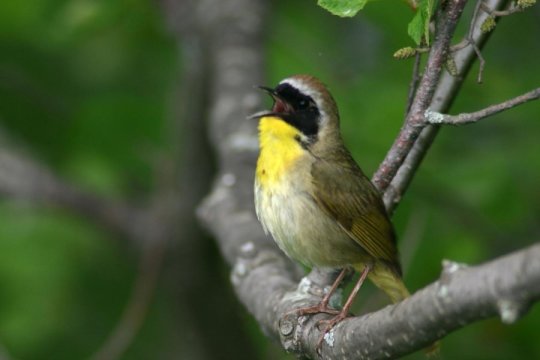[ad_1]
Knowing approximately how many individuals of a certain species are out there is important for bird conservation efforts, but raw data from bird surveys tends to underestimate bird abundance. The researchers behind a new paper from The Condor: Ornithological Applications tested a new statistical method to adjust for this and confirmed several mathematical tweaks that can produce better population estimates for species of conservation concern.
The University of Alberta’s Péter Sólymos and his colleagues tested a type of mathematical model called a “removal model” using bird count data for 152 species from the Boreal Avian Modelling Project, or BAM, which covers a vast area of Canada, Alaska, and the northeastern U.S. They found that incorporating variation in birds’ singing behavior improved models’ accuracy — how likely birds are to sing changes over the course of the day and the year, affecting how easy they are to detect. Extending the length of individual bird counts from three or five minutes to ten minutes was also beneficial.
“The chances of spotting something — a coin on the pavement, a bear in the mountains, or the apricot jam in the freezer — increases with effort,” explains Sólymos. “The more we walk, travel, look, or listen, the more things we find, but there is also a tradeoff between the number of places one can do a search and the length of the searches. Such decisions drive how long field biologists conduct bird counting at a given place. In our study, we looked at how the duration of counting influenced finding different bird species at different times of the day and the year. We also wanted to find the best way of how to standardize for different count durations and how to use these findings to provide better estimates of bird population sizes.”
This is more than just a math problem, however — accurate estimates of population size can be crucial for effective bird conservation, and many of the boreal bird species this study looked at are experiencing severe declines. This new approach offers a way to combine data from surveys that weren’t standardized in their design. “Population size of different species is one of the key metrics that affects their conservation importance, but estimating population size is a very challenging task that involves numerous assumptions,” says Sólymos. “Besides the ability to hopefully provide more accurate population size estimates, our modeling approach and findings can also help in timing of bird surveys to maximize the number of species detected.”
“While the authors of this study present the results of a rigorous comparison of modeling techniques to achieve better estimates of bird abundance from point counts, they also provide clear and simple recommendations on how and when to apply their findings to any study that expects to use time-interval point counts,” adds Jeff Wells, Science and Policy Director of the Boreal Songbird Initiative, who was not involved in the research. “This is a rich contribution not only to avian research methodology, but in the long run, also to bird conservation.”
Story Source:
Materials provided by American Ornithological Society Publications Office. Note: Content may be edited for style and length.
[ad_2]















